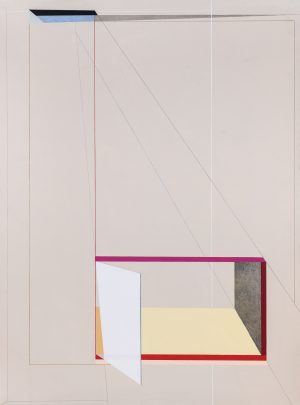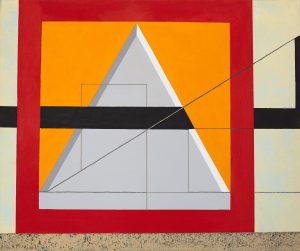
Tamás KONOK
The Structure of Train of Thought
- Year(s)
- 2004
- Technique
- acrylic on canvas
- Size
- 160x200 cm
Artist's introduction
Tamás Konok studied painting at the Hungarian College of Fine Arts between 1948 and 1953 as a student of Aurél Bernáth. He emigrated to Paris in 1959. He turned away from naturalistic painting and developed his lyrical geometric style from the 1970s, in which sensitive linear drawing plays a critical role. Galerie Lambert organised his first solo exhibition in Paris in 1960. From the 1970s, Konok and his wife, the sculptor Katalin Hetey lived in Paris and Zurich. Konok worked in close contact with Schlégl Gallery in Zurich and regularly exhibited in French, Swiss, Dutch and Swedish galleries and museums. He returned to Hungary with a solo exhibition in 1980. Since the 1990s, he has been staying and working in Budapest on a regular basis. His work attempted to capture transcendental, timeless realms of meaning: he sought to depict the forces, energies, and relations that drive the universe with his concrete, geometric shapes and linear systems. His musical studies had a profound influence on his art; thus, in his work, he paid attention to the perfect articulation of sound, rhythm, and line navigation. In addition to his "Apollonian" notion of art, which shaped his precise compositions and architectonic pictorial structures, he was also committed to renewing his painting practice during his seven-decade career. The central element of his painterly experiments – based on small-scale collages – could be grasped in the forever evolving pictorial structures, motifs and the dynamic changes in the artist's palette. Krisztina Szipőcs
More artworks in the artist's collection »






































